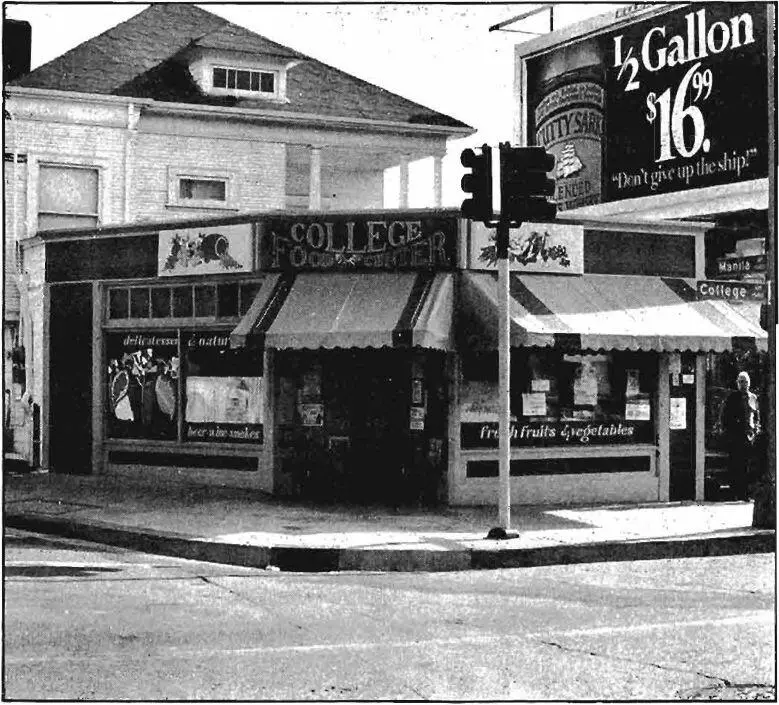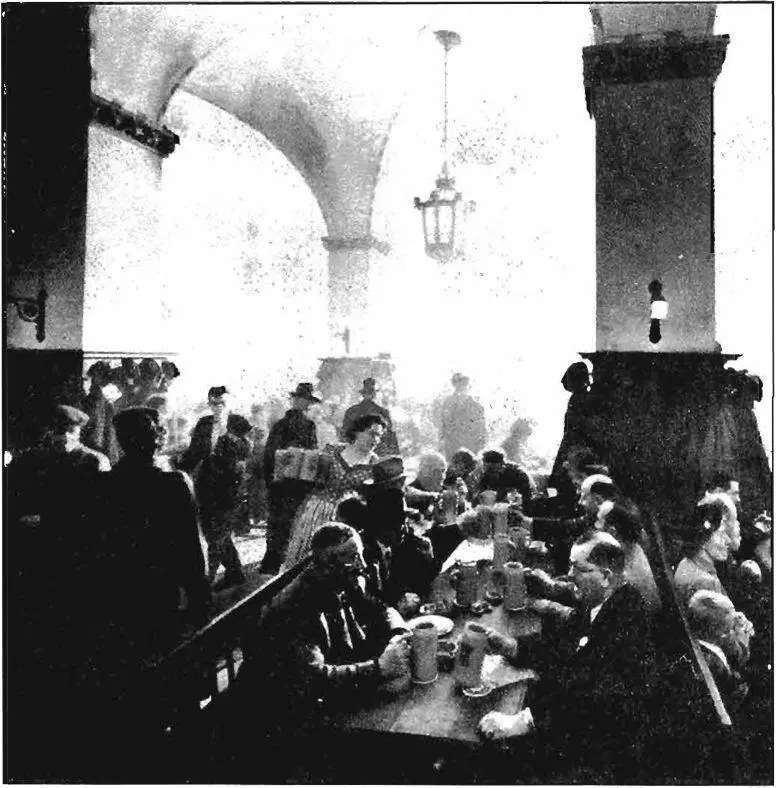Christopher alexander - A pattern language
Здесь есть возможность читать онлайн «Christopher alexander - A pattern language» весь текст электронной книги совершенно бесплатно (целиком полную версию без сокращений). В некоторых случаях можно слушать аудио, скачать через торрент в формате fb2 и присутствует краткое содержание. Жанр: Прочая научная литература, на английском языке. Описание произведения, (предисловие) а так же отзывы посетителей доступны на портале библиотеки ЛибКат.
- Название:A pattern language
- Автор:
- Жанр:
- Год:неизвестен
- ISBN:нет данных
- Рейтинг книги:3 / 5. Голосов: 1
-
Избранное:Добавить в избранное
- Отзывы:
-
Ваша оценка:
- 60
- 1
- 2
- 3
- 4
- 5
A pattern language: краткое содержание, описание и аннотация
Предлагаем к чтению аннотацию, описание, краткое содержание или предисловие (зависит от того, что написал сам автор книги «A pattern language»). Если вы не нашли необходимую информацию о книге — напишите в комментариях, мы постараемся отыскать её.
A pattern language — читать онлайн бесплатно полную книгу (весь текст) целиком
Ниже представлен текст книги, разбитый по страницам. Система сохранения места последней прочитанной страницы, позволяет с удобством читать онлайн бесплатно книгу «A pattern language», без необходимости каждый раз заново искать на чём Вы остановились. Поставьте закладку, и сможете в любой момент перейти на страницу, на которой закончили чтение.
Интервал:
Закладка:
When we worked for the University of Oregon, we compared the importance of such discussion in cafes and cafe-like places, with the instruction students receive in the classroom. We interviewed 30 students to measure the extent that shops and cafes contributed to their intellectual and emotional growth at the University. We found that “talking with a small group of students in a coffee shop” and “discussion over a glass of beer” scored as high and higher than “examinations” and “laboratory study.” Apparently the informal activities of shops and cafes contribute as much to the growth of students, as the more formal educational activities.
We believe this phenomenon is general. The quality that we tried to capture in these interviews, and which is present in a neighborhood cafe, is essential to all neighborhoods—not only student neighborhoods. It is part of their life-blood.
Therefore:
Encourage local cafes to spring up in each neighborhood. Make them intimate places, with several rooms, open to a busy path, where people can sit with coffee or a drink and watch the world go by. Build the front of the cafe so that a set of tables stretch out of the cafe, right into the street.
several rooms
tables
t3 4?
<���£9$u_^
||£b &> ay )-■
terrace
newspapers
busy path
**• *5*
Build a wide, substantial opening between the terrace and the indoors—opening to the street (165); make the terrace double as a place to wait (150) for nearby bus stops and offices; both indoors and on the terrace use a great variety of different kinds of chairs and tables—different chairs (251); and give the terrace some low definition at the street edge if it is in danger of being interrupted by street action—stair seats (125), sitting wall (243), perhaps a canvas roof (244). For the shape of the building, the terrace, and the surroundings, begin with building complex (95). . . .
| 89 CORNER GROCERY* |
|---|
 |
44O
. . . the major shopping needs, in any community, are taken care of by the market of many shops (46). However, the web of shopping (19) is not complete, unless there are also much smaller shops, more widely scattered, helping to supplement the markets, and helping to create the natural identity of identifiable NEIGHBORHOODS ( I 4) .
-h V
It has lately been assumed that people no longer want to walk to local stores. This assumption is mistaken.
Indeed, we believe that people are not only willing to walk to their local corner groceries, but that the corner grocery plays an essential role in any healthy neighborhood: partly because it is just more convenient for individuals; partly because it helps to integrate the neighborhood as a whole.
Strong support for this notion comes from a study by Arthur D.'Little, Inc., which found that neighborhood stores are one of the two most important elements in people’s perception of an area as a neighborhood (Community Renezoal Program , New York: Praeger Press, 1966). Apparently this is because local stores are an important destination for neighborhood walks. People go to them when they feel like a walk as well as when they need a carton of milk. In this way, as a generator of walks, they draw a residential area together and help to give it the quality of a neighborhood. Similar evidence comes from a report by the management of one of San Francisco’s housing projects for the elderly. One of the main reasons why people resisted moving into some of the city’s new housing projects, according to the rental manager, was that the projects were not located in “downtown locations, where . . . there is a store on every street corner.” ( San Francisco Chronicle , August 1971.)
To find out how far people will walk to a store we interviewed 20 people at a neighborhood store in Berkeley. We found that 80 per cent of the people interviewed walked, and that those who walked all came three blocks or less. Over half of
TOWNS
them had been to the store previously within two days. On the other hand, those who came by car usually came from more than four blocks away. We found the pattern to be similar at other public facilities in the neighborhoods that we surveyed. At distances around four blocks, or greater, people who rode outnumbered those who walked. It seems then, that corner groceries need to be within walking distance, three to four blocks or I 200 feet, of every home.
But can they survive? Are these stores doomed by the economics of scale? How many people does it take to support one corner grocery? We may estimate the critical population for grocery stores by consulting the yellow pages. For example, San Francisco, a city of 750,000, has 638 neighborhood grocery stores. This means that there is one grocery for every 1160 people, which corresponds to Berry’s estimate—see web of shopping (19)—and corresponds also to the size of neighborhoods— See IDENTIFIABLE NEIGHBORHOOD (14).
It seems, then, that a corner grocery can survive under circumstances where there are 1000 people within three or four blocks—a net density of at least 20 persons per net acre, or six houses per net acre. Most neighborhoods do have this kind of density. One might even take this figure as a lower limit for a viable neighborhood, on the grounds that a neighborhood ought to be able to support a corner grocery, for the sake of its own social cohesion.
Finally, the success of a neighborhood store will depend on its location. It has been shown that the rents which owners of small retail businesses are willing to pay vary directly with the amount of pedestrian traffic passing by, and are therefore uniformly higher on street corners than in the middle of the block. (Brian J. L. Berry, Geography of Market Centers and Retail Distribution , Prentice Hall, 1967, p. 49.)
Therefore:
Give every neighborhood at least one corner grocery, somewhere near its heart. Place these corner groceries every 200 to 800 yards, according to the density, so that each one serves about 1000 people. Place them on corners, where
large numbers of people are going past. And combine them with houses, so that the people who run them can live over them or next to them.
| small grocery |
|---|
 |
Prevent franchises and pass laws which prevent the emergence of those much larger groceries which swallow up the corner groceries—individually owned shops (87). Treat the inside of the shop as a room, lined with goods—the shape of indoor SPACE (191), THICK WALLS ( 197) , OPEN SHELVES (200); give it a clear and wide entrance so that everyone can see it—main ENTRANCE (110), OPENING TO THE STREET ( 16 5) . And for the shape of the grocery, as a small building or as part of a larger building, begin with building complex (95). . . .
| 90 BEER HALL |
|---|
 |
44+
Читать дальшеИнтервал:
Закладка:
Похожие книги на «A pattern language»
Представляем Вашему вниманию похожие книги на «A pattern language» списком для выбора. Мы отобрали схожую по названию и смыслу литературу в надежде предоставить читателям больше вариантов отыскать новые, интересные, ещё непрочитанные произведения.
Обсуждение, отзывы о книге «A pattern language» и просто собственные мнения читателей. Оставьте ваши комментарии, напишите, что Вы думаете о произведении, его смысле или главных героях. Укажите что конкретно понравилось, а что нет, и почему Вы так считаете.












